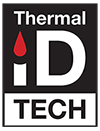May 27th 2025
Why Dissolvable and Legible Labels Are Crucial in the Food Service, Restaurant, and Cafeteria Industry
In professional kitchens—whether in restaurants, cafeterias, or catering operations—food labeling is a critical control point for safety, compliance, and operational efficiency. As food safety standards tighten and sustainability gains importance, dissolvable labels with legible print are becoming a smart, effective solution that solves both hygiene and workflow challenges.
Why Dissolvable Labels Matter
Prevent Cross-Contamination and Bacterial Growth
Traditional labels that are difficult to remove can leave behind residue or adhesive on reusable containers. This creates a potential breeding ground for bacteria and allergens. Dissolvable labels completely disintegrate in water, leaving no residue, which helps ensure containers are fully clean and sanitized between uses.
- Simplify Daily Kitchen Operations
Staff in busy kitchens often use hundreds of containers for prep, storage, and leftovers. Dissolvable labels eliminate the need to scrub off old labels, saving time and labor. This streamlines turnover during food prep and cleanup, keeping operations efficient and compliant. - Support HACCP Compliance
Many health departments and safety programs, including Hazard Analysis and Critical Control Points (HACCP), require food to be labeled with prep dates, expiration dates, and allergens. Dissolvable labels make it easy to meet these standards without compromising on cleanliness or reusability. - Environmental Sustainability
Dissolvable labels reduce waste and water usage. Since they wash away cleanly, there’s no need for harsh chemicals or label removers. For foodservice operations looking to lower their environmental footprint, these labels offer an eco-friendly alternative.
Why Legibility Is Just as Important
Reduces Risk of Foodborne Illness
Labels must be clearly legible to indicate important information such as:
If a label smears or becomes unreadable, the risk of improper storage or unsafe use rises significantly.
- Use-by or discard dates
- Allergen warnings
- Contents and preparation notes
- Avoids Costly Mistakes
Poorly labeled containers can lead to confusion, incorrect food usage, or premature disposal. Legible labels ensure the right food goes to the right use at the right time, reducing waste and avoiding health code violations. - Boosts Staff Accountability
Well-designed labels that are easy to write on and easy to read help kitchen staff follow protocols. They allow teams to take responsibility for their prep work, improving consistency and traceability throughout the kitchen. - Improves Inspection Outcomes
Health inspectors routinely check for proper labeling of food storage containers. Clear, legible labels that comply with local health codes help restaurants avoid fines, warnings, or shutdowns.
Key Use Cases in Food Service
- Prep date labeling for perishable ingredients
- Allergen identification for meal prep containers
- Catering trays or meal kits for accurate delivery
- Rotating FIFO inventory in walk-in coolers or pantries
- Cleaning schedules for reusable storage bins
Conclusion
In the food service industry, dissolvable labels with clear, legible print aren’t a luxury—they’re a necessity. They reduce the risk of contamination, improve food safety compliance, and help streamline back-of-house operations. Combined, these benefits lead to cleaner kitchens, lower labor costs, and better customer outcomes.
For label manufacturers and kitchen supply companies, offering high-quality, legible dissolvable labels is an excellent way to support food safety and drive value in the foodservice sector. Whether it’s a local deli or a national cafeteria chain, these small labels can make a big impact.
For custom dissolvable labels, contact us 1888-958-5611.


